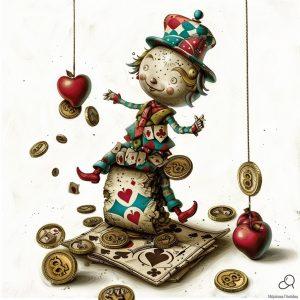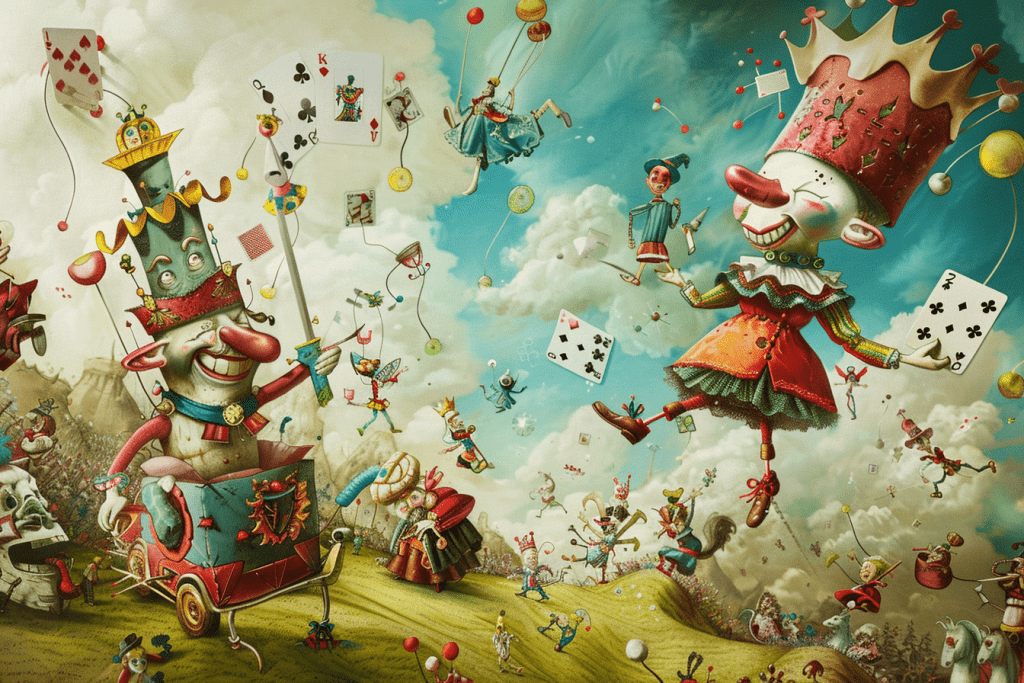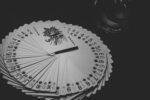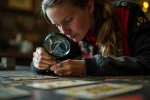Learn to play Talluum – You’re going to love it!
Recently my daughter Yvonne returned from a weekend with her in-laws in Winnipeg Manitoba where she told me of a card game they were playing called Talluum. “Well I’m not actually sure what the name of it was,” she added. “But it was something like Talluum.” Yvonne went on to teach the game to me and I was immediately hooked. First, because it was fun playing with just two players although apparently it’s more fun with at least four. But also, I loved the idea of cards having ‘powers’ and the way the game challenged my inner strategist as well as my memory!
Talluum (which is what we will hereafter call this game) is easy to learn, and each hand plays quickly, although you might slow it down for the first few rounds. It uses a regular deck of cards which everyone carries around in their pockets (right?) so it can be played anytime, anywhere.
When I was researching the game, I found reference to a similar game on Pagat.com known as Golf and there are many many variations. Once you’ve become familiar with Talluum, you can visit the Golf page and try 8-card Golf, 10-card Golf, and half a dozen or so variations of Power Cards. As well, there are links to other Golf sites. But enough of Golf – let’s move on with Talluum!
 The Deal
The Deal
A standard 52-card pack is used, and the number of players could in theory be from two to around eight or more, though the game is said to be best for about four. With a large number of players, say eight or more, two packs may be shuffled together. The deal and play are clockwise.
The dealer deals four cards to each player, one at a time. Each player’s cards are to be arranged face down in a tableau in front of them. The remaining undealt cards are placed face-down in the centre of the table to form a drawing stock. The top card of the stock is turned face up and placed beside the stock to start the discard pile.
Note: In variations of this game (Golf) some start with 6 cards, 8 cards, or ten cards in the tableau. You can read more of that in the link above. When Yvonne and I played, because there were just two of us, we dealt 5 cards to the tableau.
The Goal
The goal of the game is to end each hand with the least amount of points in your 4 card tableau.
The Play
The player to the dealer’s left begins, and the turn to play passes clockwise. At your turn you must either draw the top card of the face-down stock, or draw the top discard, or say Talluum which ends the play of this hand. Here are options for play in a turn.
1. Draw the top card from the Stock
– Use it to replace one of your tableau cards, place the tableau card face up in the discard pile – it is now available to the next player.
– Use the card’s power (see list of powers below). In this case the card is now ‘burnt out’ and its power cannot be used again. Then discard the card. The next player still has the option to use the card at face value if they wish. For example, the card you drew might have been a 9. You used it to look at someone’s card. Then you discarded it. The next player might know they have a 9 on their tableau so they choose to use the 9 you discarded in order to make a pair, which scores 0 in the final count (see card values below).
– Do nothing, simply discard the card. It is now available for use by the next player should they want it.
2. Draw the top card on the Discard Pile
– Use it to replace one of your tableau cards, place the tableau card face up in the discard pile – it is now available to the next player.
– Use the card’s power (see list of powers below). If the card’s power has already been used, however, it is ‘burnt out’ and its power cannot be used again.
3. Say Talluum
If you do this, everyone gets one more turn and then Tableaus are revealed and points counted.
The Count
The goal is to end each hand with the least amount of points in your 4-card spread. Here’s how the points are counted
A – 1
2, 3, 4, 5, 6, 7, 8, 9, 10 – face value
J, Q – 10
Red K – 0
Black K – 15
Joker – 1
Pair (Doubles) – 0
Individual hands don’t take very long so we suggest you have a pad of paper and keep track of players’ scores. You could agree on a set number of hands to end the game, then add up the scores, and the player with the least number of points wins. You could also have a side column to keep track of ‘win/loss’ per hand – this can create a more textured game play!
 Card Powers
Card Powers
In the game of Talluum, different cards have powers that can be brought into play during a player’s turn. As mentioned above, are many variations of this game, all of them giving powers differently. But for our game of Talluum, here are the powers of cards (you might want to write them down on a piece of paper and keep them close to you for a while):
7-9: Look privately at someone’s card (not your own)
10: Look privately at one of your own cards
Jack: Trade and Look. Trade a face down card from your own tableau with a face down card from someone elses’s tableau. Look at that card privately, and put it on your tableau.
Queen: Look and then Trade. Look privately at one card on your own tableau and trade it with one facedown card on an opponent’s tableau.
King: Trade without Looking. Swap one of your face down cards with a facedown card belonging to an opponent without looking at either card.
Joker: Require one opponent to shuffle the cards on their tableau, so that they no longer know which is which.
Play continues until one play says TALLUUM. At this point each other player gets one more turn. Then cards are revealed and points counted.





